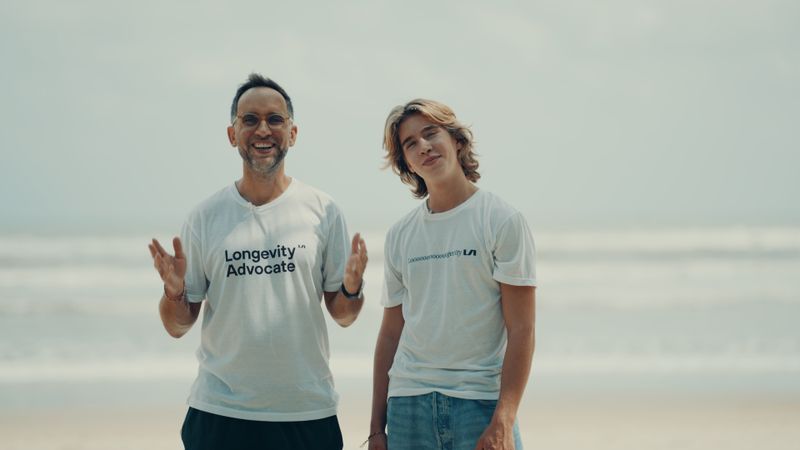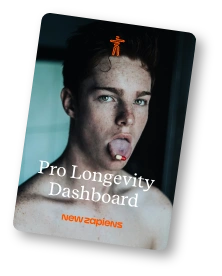Breathwork isn’t just a wellness trend. It’s the language of your nervous system.

Most people think of breathwork as a way to calm down. A yoga add-on. Something gentle, a bit mystical, maybe even hard to take seriously.
But what if I told you that breath isn’t just a relaxing tool? It’s how your nervous system speaks.
I learned this the hard way. Years ago, when I was burned out and stuck in survival mode, someone told me to “just breathe.” I remember wanting to scream. Not because it was wrong, but because no one had ever explained how breath actually works. Or why it matters. Or what kind of breathing does what.
Today, I teach women how to connect to their bodies and minds through movement, breath, and neurotraining. And the more I see it in practice, the more I know: your breath is not a soft skill. It’s a power tool.
Let’s break it down.
Your breath is a message
Your nervous system is always scanning your environment. It’s constantly asking: „Am I safe? Can I rest? Do I need to protect myself?“
But it doesn’t get answers from your thoughts. It reads your posture, your muscle tension, and most importantly, your breath.
Shallow, fast breathing tells your system there’s danger. Long, slow exhales tell it you’re safe. That’s not a metaphor. It’s neurobiology.
Research from Stanford University shows that even a few minutes of deliberate, controlled breathing can reduce anxiety more effectively than mindfulness meditation. Why? Because it directly regulates the autonomic nervous system. You’re not trying to think yourself into calm. You’re breathing your body into it.
Dr. Stephen Porges’ work on Polyvagal Theory supports this understanding. He shows how slow, rhythmic breath tones the vagus nerve, the main communicator between body and brain. Breath becomes a two-way signal. It is not just a symptom of how we feel but a way to change how we feel.
And once you begin to understand this, you start realizing how often you’ve been holding your breath. Not just physically, but emotionally too.
Different breaths, different results
Here’s where most people get stuck. They try one style of breathwork, usually the classic deep belly breath, and expect it to fix everything.
But not all breathing is the same. Different techniques do different things:
Breath for energy: Upregulation
This one is great when you’re feeling frozen, sluggish, or mentally foggy. It’s the nervous system’s wake up button.
Try short, sharp inhales through the nose and passive exhales like a soft sigh. Do 30 seconds and pause. Repeat if needed.
This activates the sympathetic system in a healthy way. It energizes without overwhelming.
Use it before a workout, a morning meeting, or when you’re stuck in a procrastination spiral.
Breath for calm: Downregulation
This is what most people associate with breathwork. Long exhales, nasal breathing, and slowing the rhythm. It tells the body, “We’re safe now.”
Try inhaling for 4 counts, exhaling for 6. Or even better, double the exhale length.
You can also hum softly on the exhale. This vibration stimulates the vagus nerve and adds a grounding cue that the body reads as safety.
It is ideal for anxious moments, bedtime, or emotional overwhelm.
Breath for balance: Re-centering
Sometimes we don’t want to energize or calm down. We want to return to our center.
Try box breathing. Inhale for 4 counts, hold for 4, exhale for 4, hold again for 4. Repeat 3 to 5 rounds.
This technique is used by elite performers under pressure, not because it’s fancy, but because it works.
In your daily life, this is the perfect breath to use before a difficult conversation, while waiting for test results, or when you’re about to say yes to something you don’t really want.
Breathwork isn’t escapism. It’s self-leadership.
Here’s the thing. We’re not breathing to escape discomfort. We’re breathing to build capacity for it.
One of my clients, a young woman juggling a demanding job and constant inner pressure to be perfect, once told me, “I feel like I’m always running, and my breath is chasing me.”
Through consistent practice, she learned how to meet herself in that breathless moment. To pause. To exhale. To stay.
That’s what breathwork gives us. The ability to stay. To respond instead of react. To feel without falling apart.
And when you combine breath with movement, especially intuitive and non-linear movement, it becomes even more powerful. It becomes your return path to the body. To yourself.
In my own sessions, I often begin strength or flow practices with just one minute of rhythmic breath. It’s a ritual. Not to prepare the body, but to invite it in.
There’s a difference between pushing through a workout and inhabiting it.
And that difference starts with your breath.
One breath can change your state
You don’t need a fancy studio. You don’t need a 60-minute session. You need one breath. One conscious inhale. One soft exhale.
The next time you’re overwhelmed, frozen, spiraling in your head, stop.
Feel your feet on the ground. Place a hand on your belly. Breathe in. Then breathe out a little longer.
You are not behind. You are not broken. You are just one breath away from coming back to yourself.
That is not some vague wellness trick. That is your body’s wisdom.
That is how you lead yourself back.
References
Author: Žeňa Březinová
Mind & Movement Coach. Empowering women through mindful movement, neurotraining, and breathwork. I help clients reconnect with their bodies, build emotional resilience, and create sustainable well-being practices: online and worldwide. Passionate about nervous system regulation, embodied confidence, and creating safe, strong communities where growth feels natural. :)




